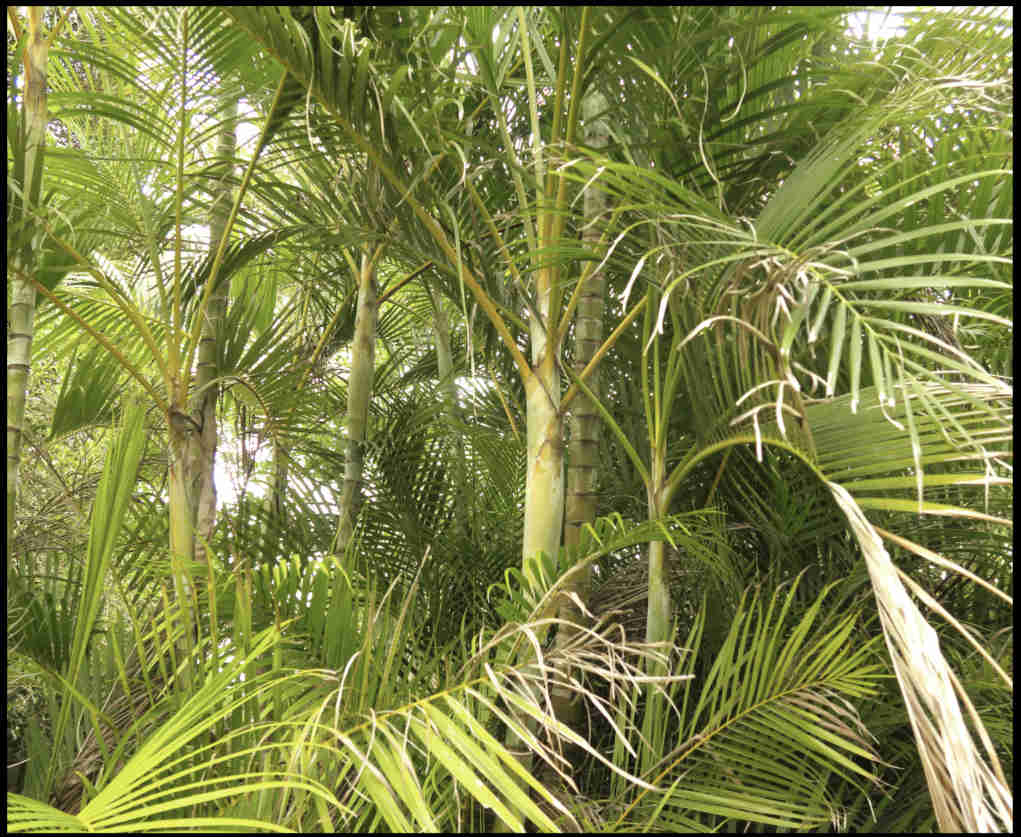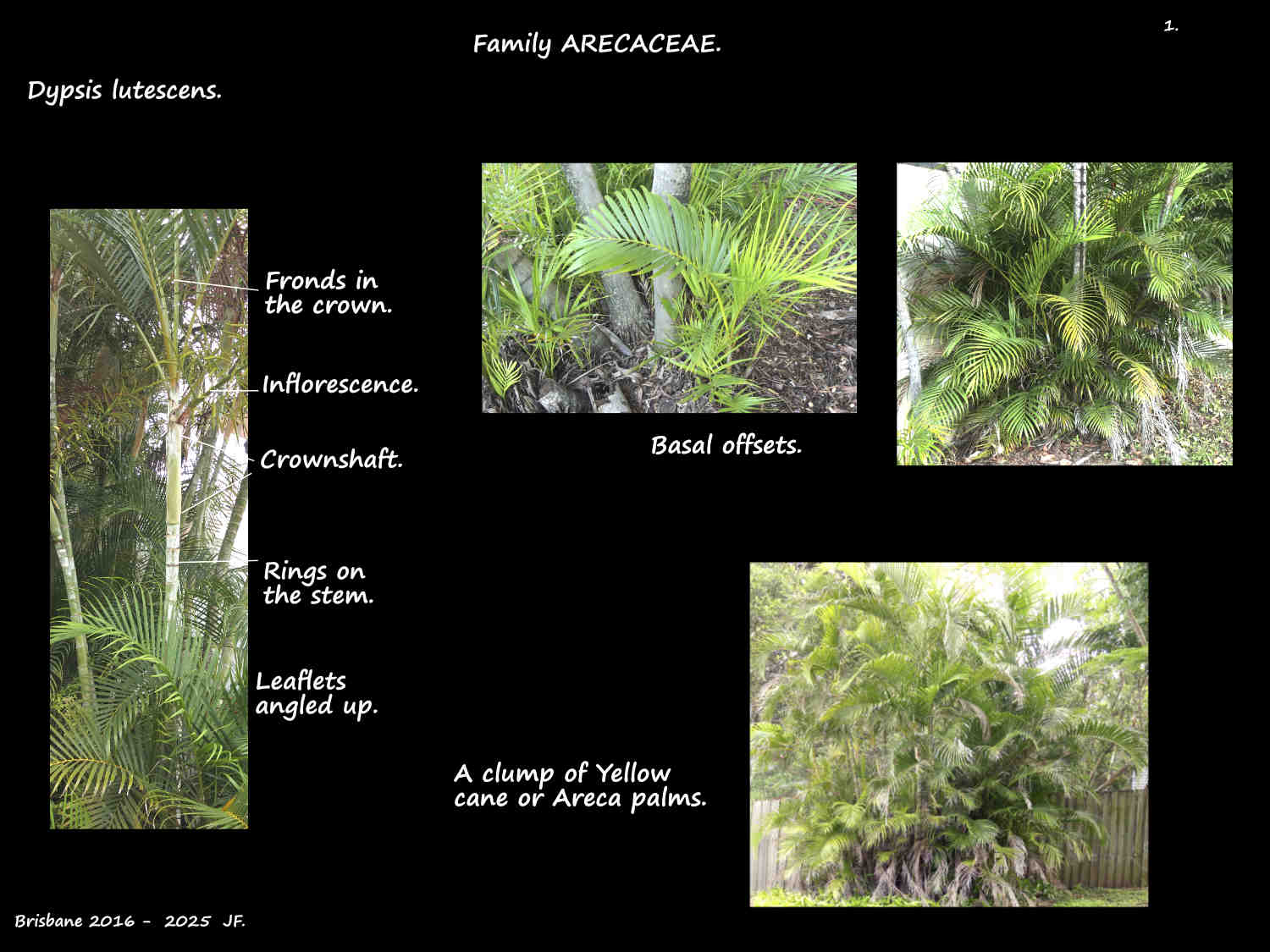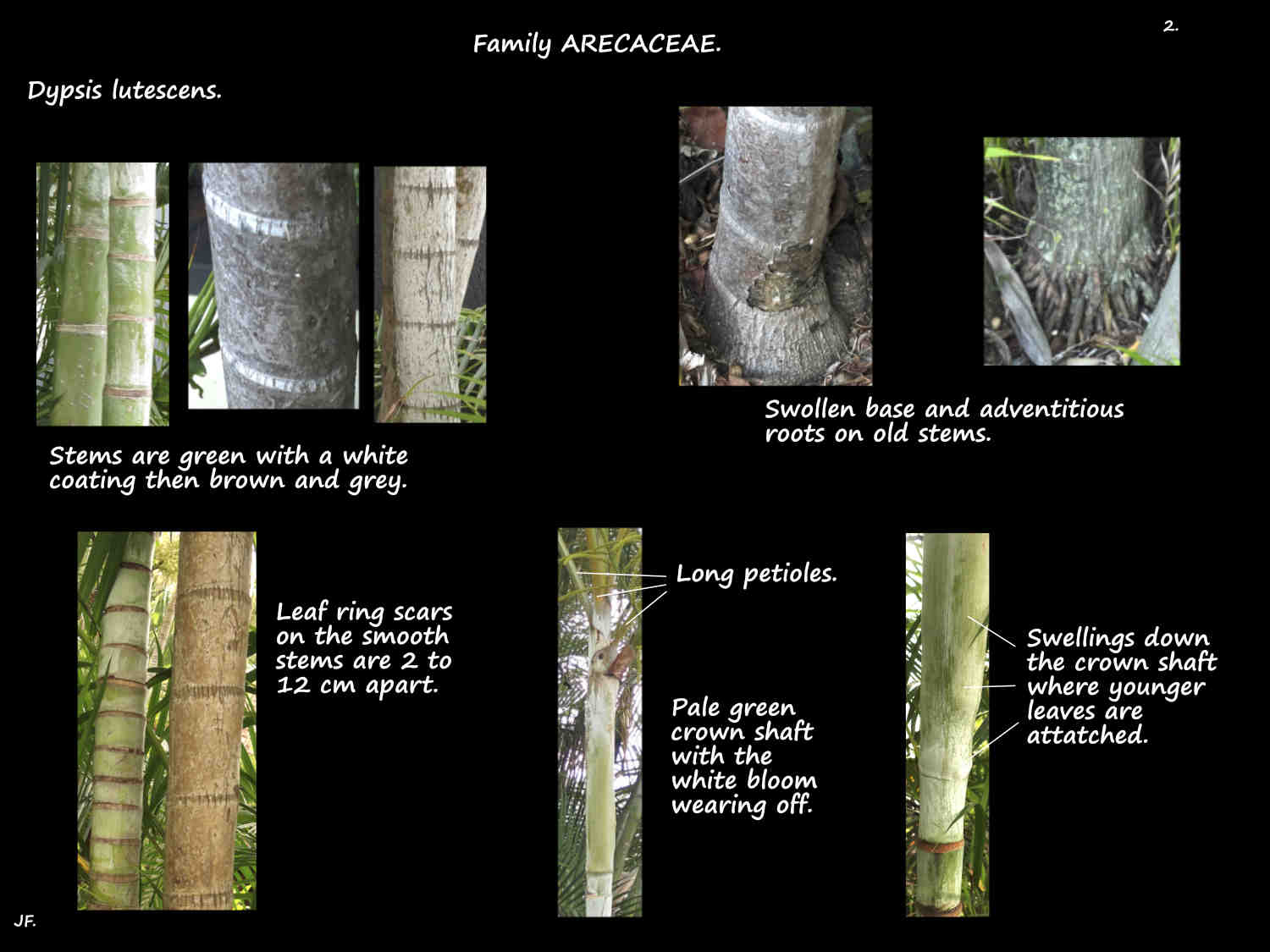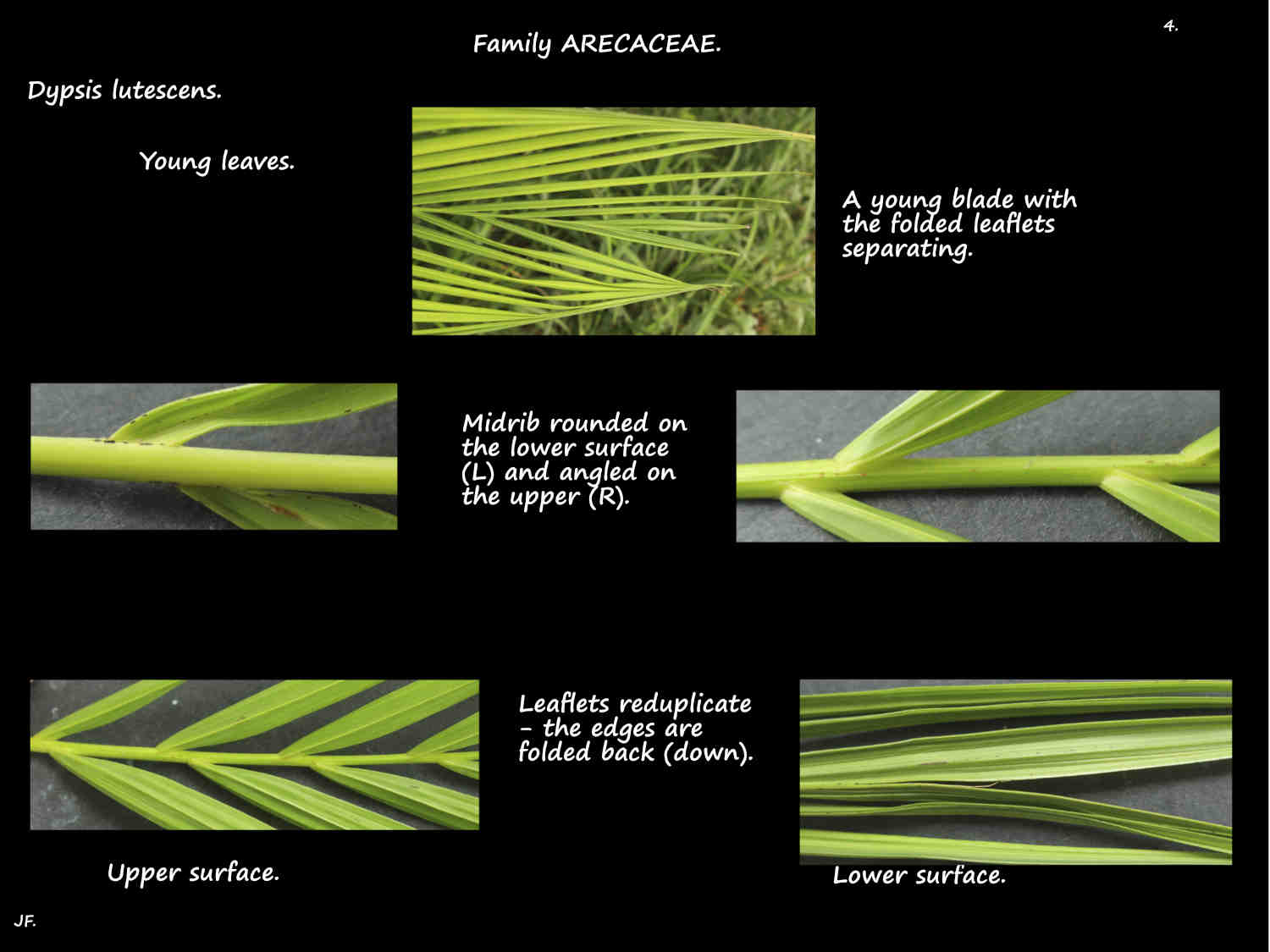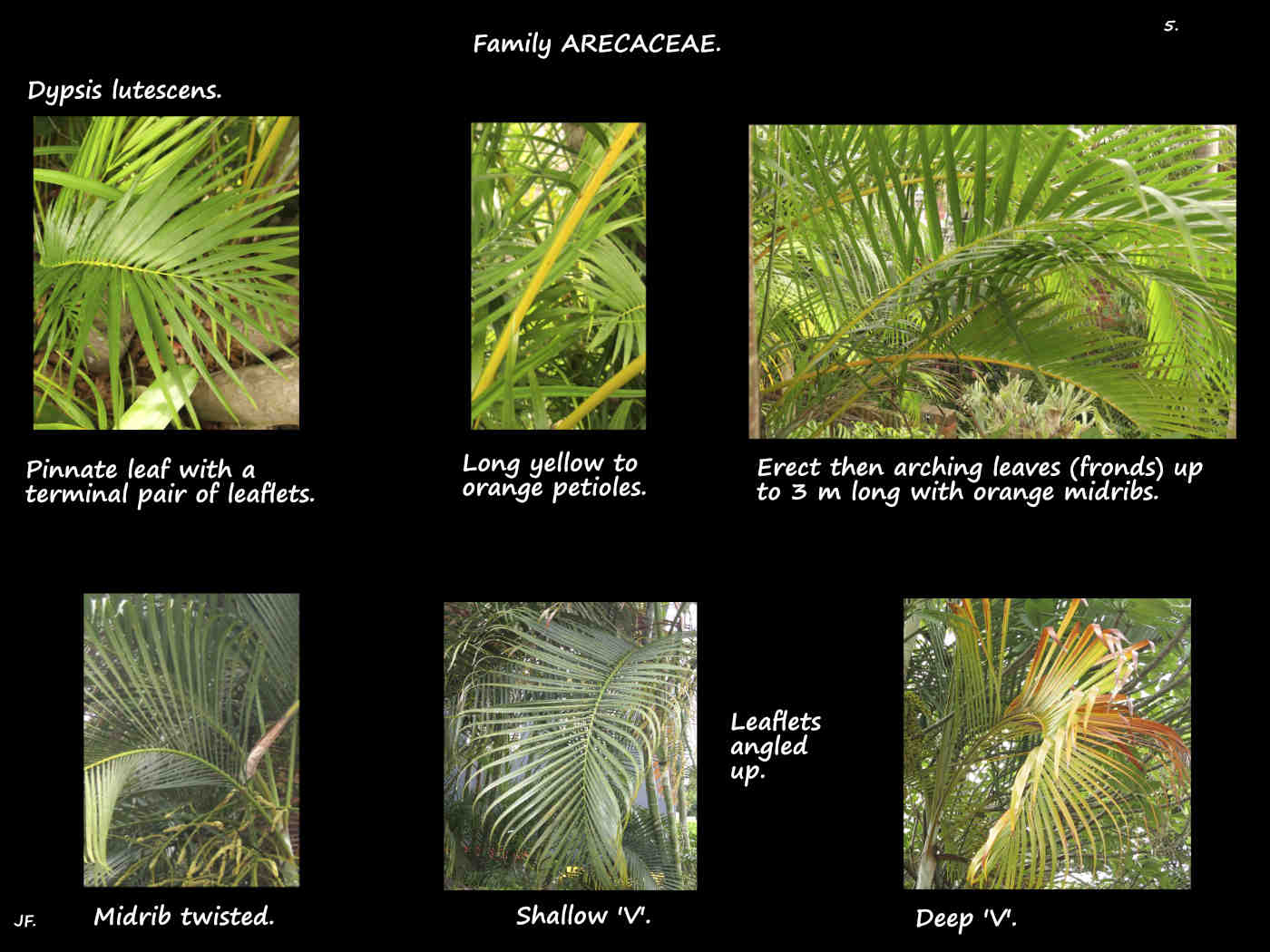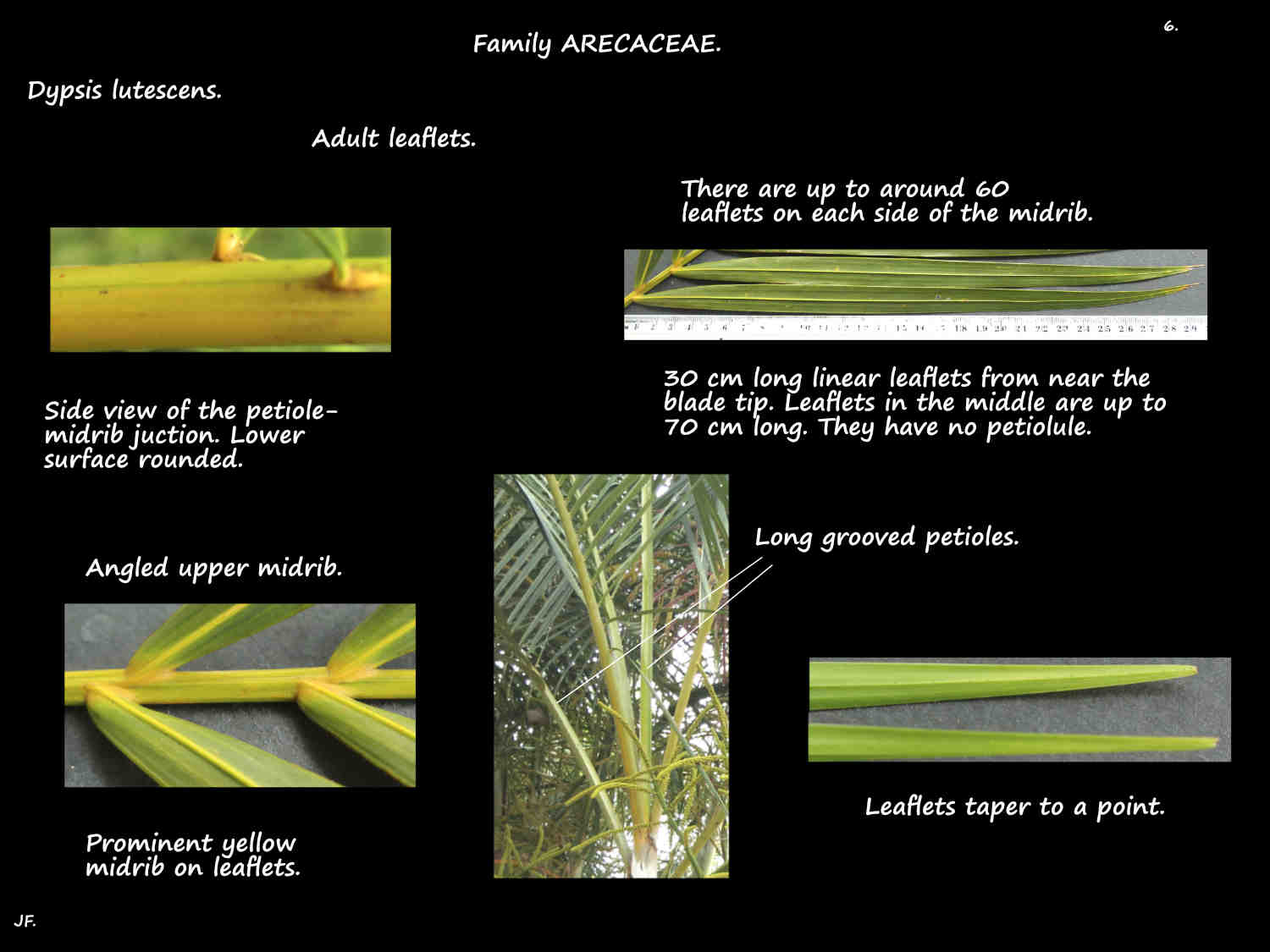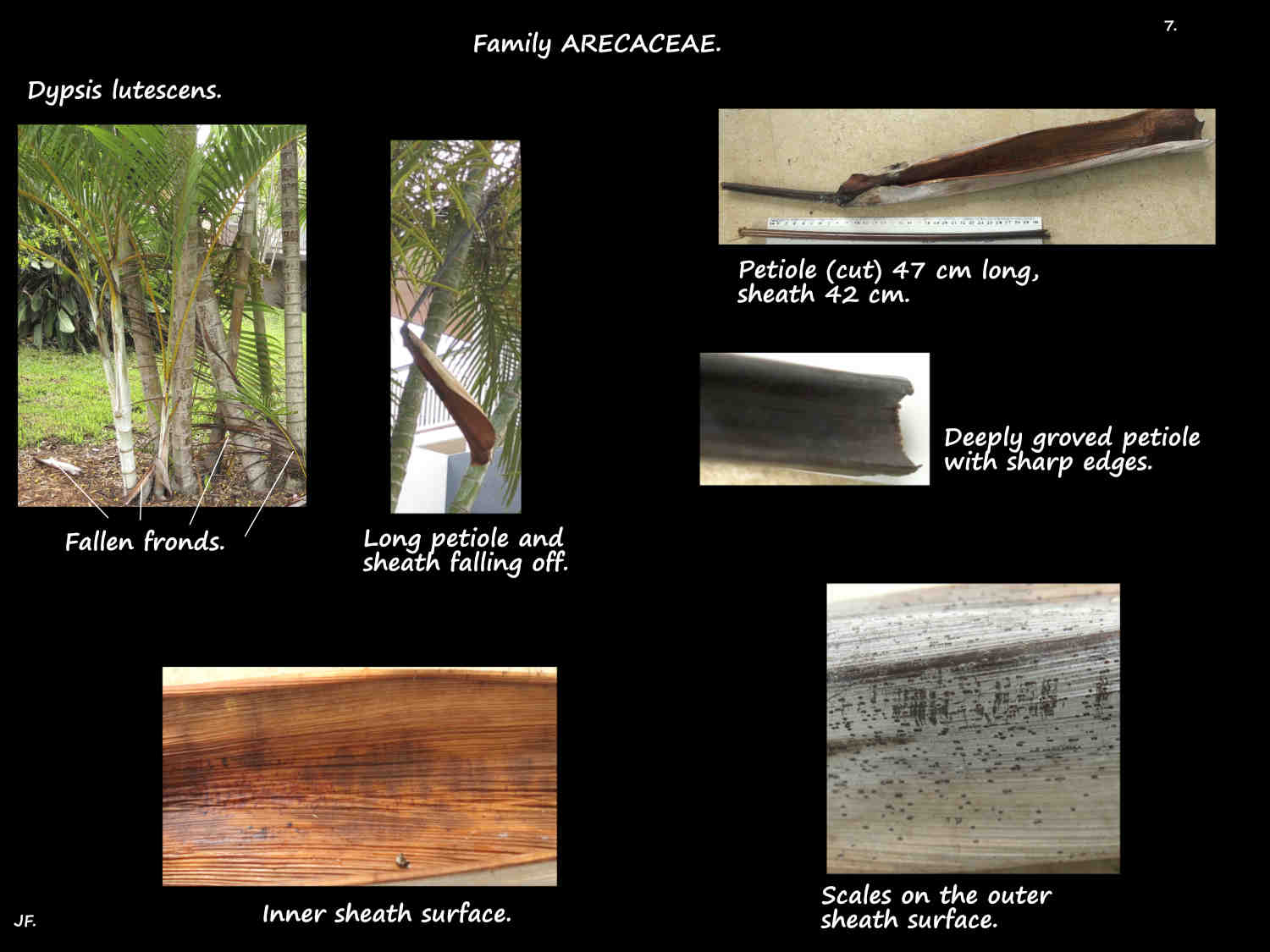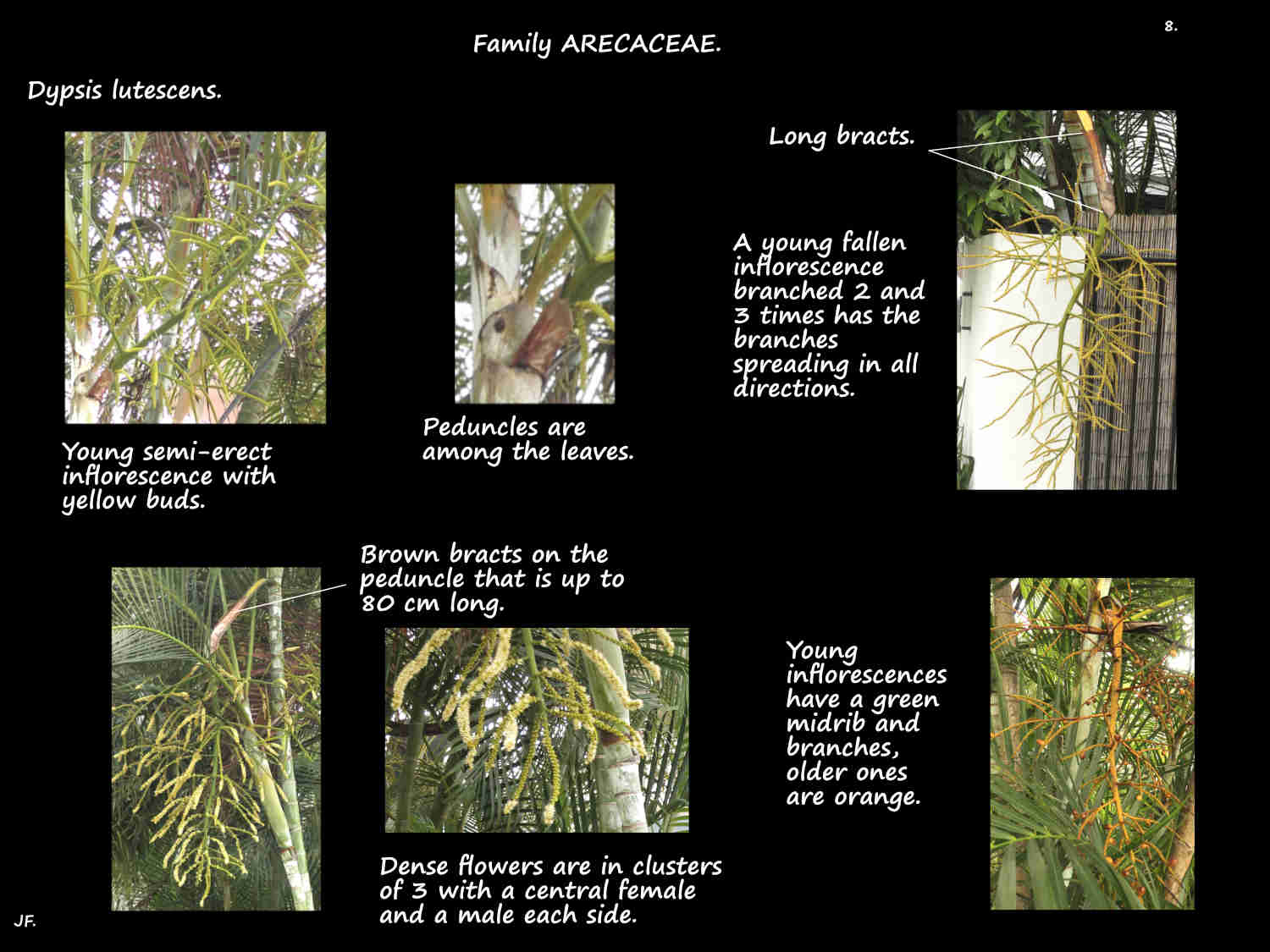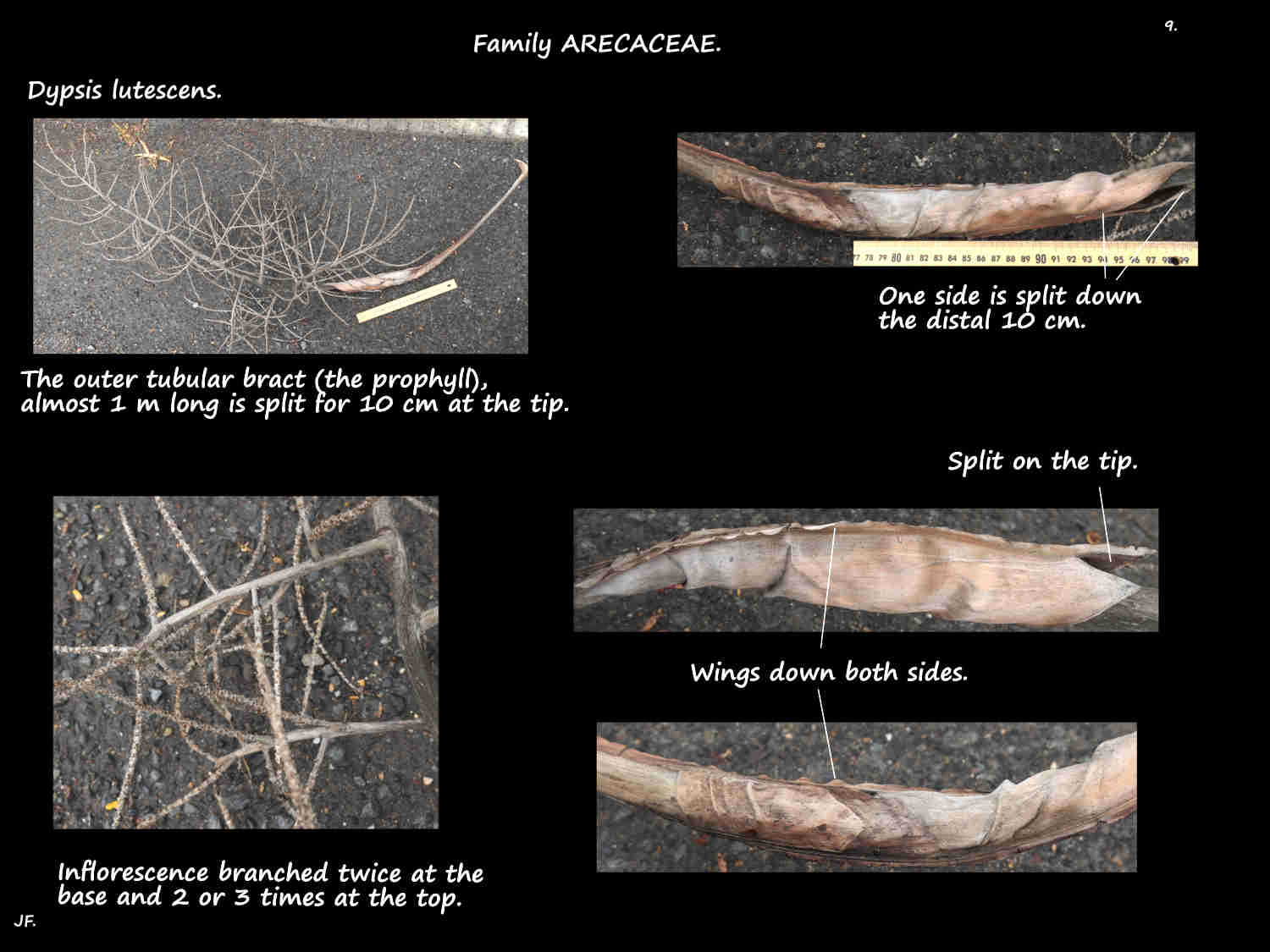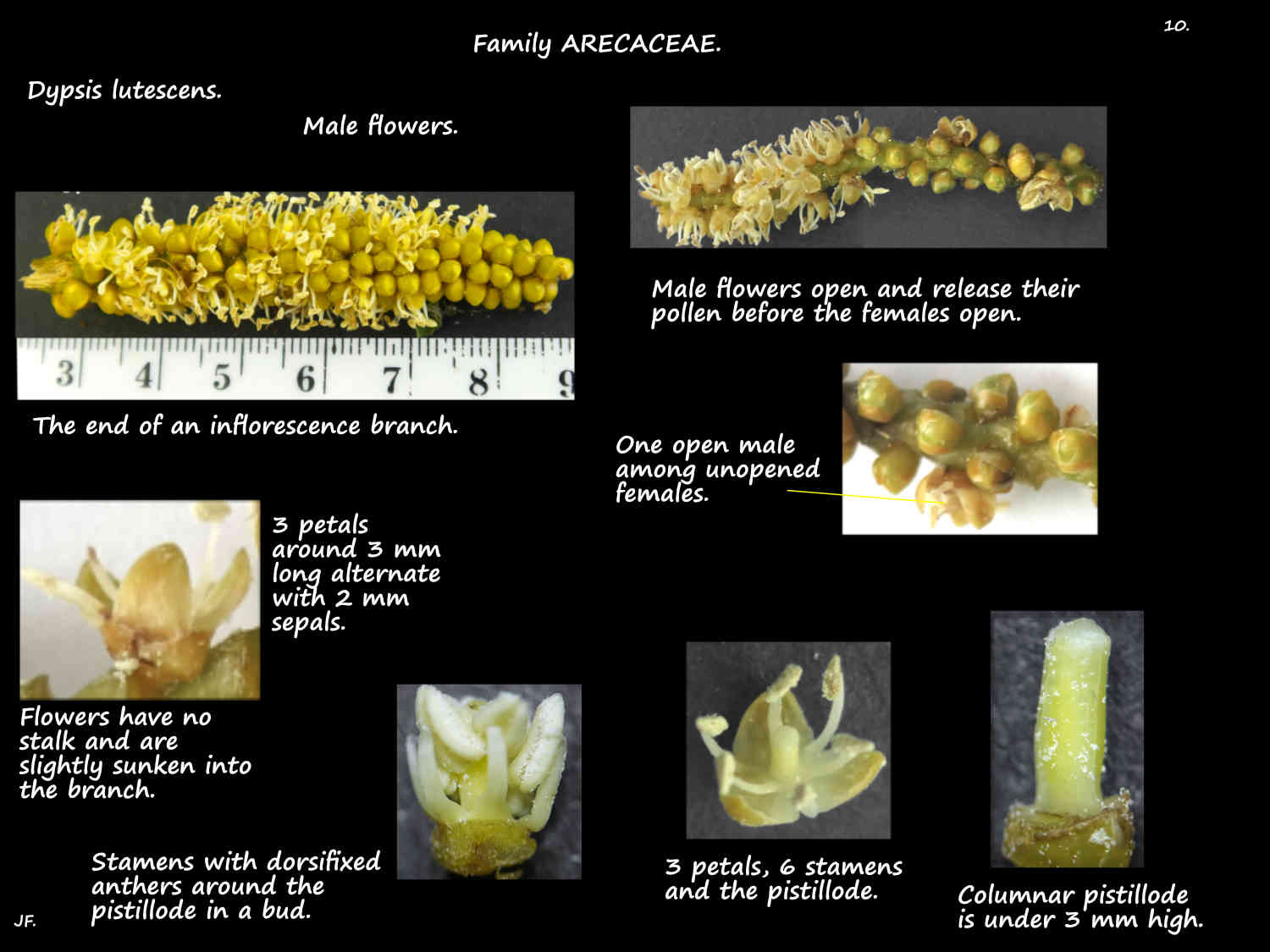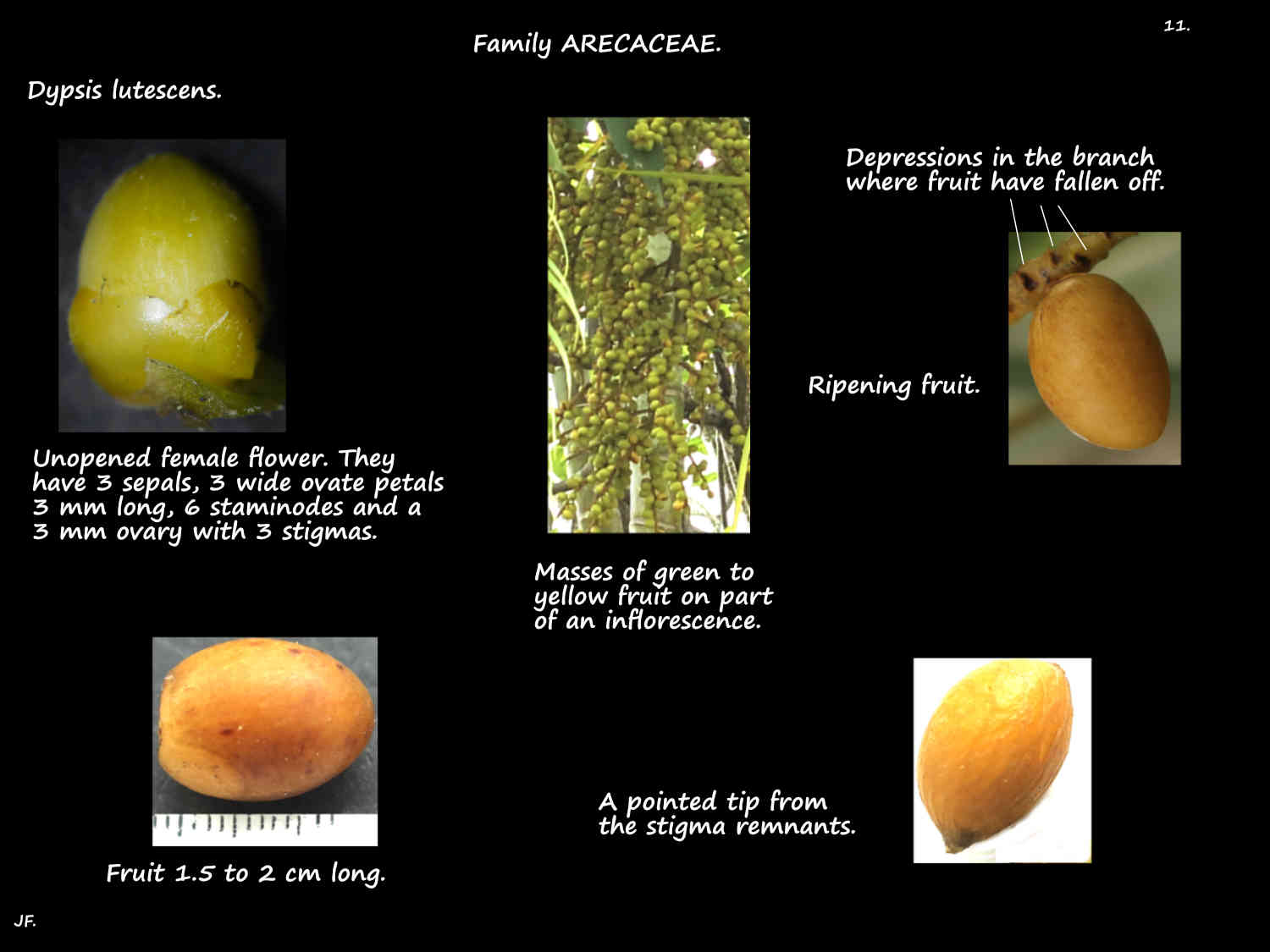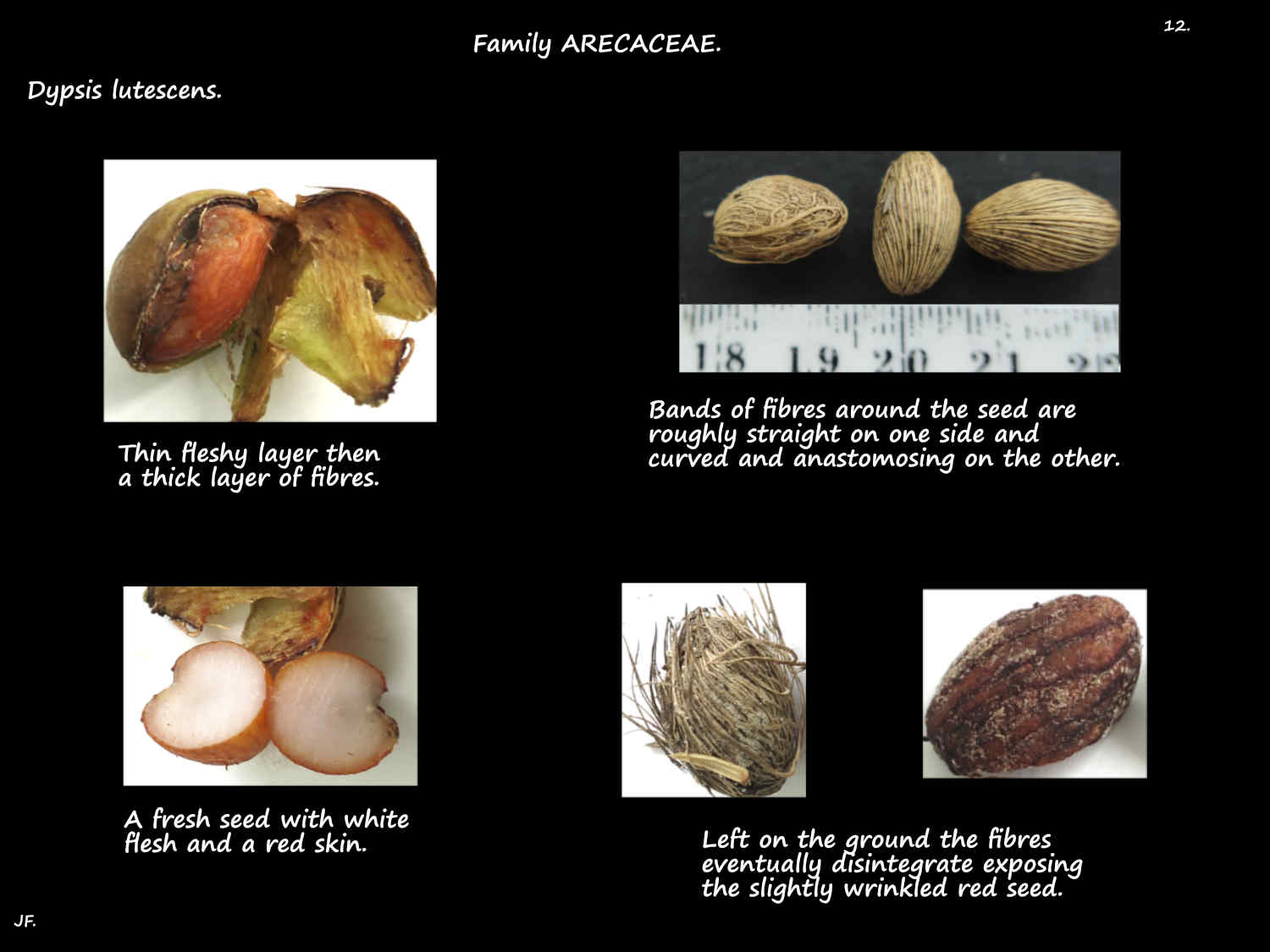The Yellow Cane palm is native to Madagascar.
It is also known as Chrysalidocarpus lutescens and the Areca palm.
It is a very common plant in Brisbane.
They are perennial clustering palms with a cane-like stem.
Almost always unbranched they may have 1 or 2 short ones.
With numerous suckers at the base they can eventually form large dense clumps.
Palms can grow to around 10 m high with a trunk up to 15 cm across.
Smooth trunks have close ring scars at the top and up to 12 cm apart below.
New stems are green with a white waxy bloom while old ones are brown or grey.
On old palms the base of the trunk may be swollen.
Most only have a few leaves (fronds) but there can be up to around 10.
Up to 3 m long they are in 3 ranks or occasionally a spiral.
New leaves are erect but they become more arching as they lengthen.
Adult leaves often have a twisted midrib.
The upper surface of the long petiole has a deep groove with sharp edges.
Green then yellow to orange it has dark scales at the base.
The wide petiole bases extend down the stem as open sheaths.
All the sheaths form a pale yellow-green crown shaft with a waxy white bloom.
Sheaths, up to 1 m long and 15 cm across have scales near the base.
The petiole extends into the blade as the green then yellow or orange midrib or rachis.
Up to 2 m long it is round on the lower surface and angled on the upper.
Blades are pinnate with up to 60 linear sub-opposite leaflets on each side of the midrib.
Leaflet tips taper to a point and the terminal pair may be joined at the base.
Leaflet edges are folded back (reduplicate or ‘A’ shaped in cross section).
The blade itself is ‘V’ shaped with leaflets on each side of the midrib being angled up.
Semi-erect then drooping inflorescences are on a peduncle that can be over 80 cm long.
Initially among the leaves, when with fruit they are at the base of the crown shaft.
The panicles, branched 3 (2 or 4) times are up to 60 cm long.
Branches, spreading in all directions are up to 30 cm long.
The tubular basal bract (prophyll) is up to 1 m long.
Split at the tip for 10 to 15 cm it has narrow wings down it and some scales.
There are a few bracts further down the peduncle.
The first peduncular bract, up to 60 cm long has a beak at the tip.
Smaller open peduncular bracts are only a few cms long.
Bracts at the base of the branches are only a few mms long.
Densely packed flowers, in groups of 3 are slightly sunken into the branches.
Male flowers
The 2 side male flowers have 3 sepals under 2 mm long with a keel.
The 3 petals, around 3 mm long and fused at the base have lobes with a pointed tip.
The 6 stamens, around 4 mm long have dorsifixed anthers.
The pistillode is under 3 mm long.
The centre female flower, 3 mm across has 3 sepals with no keel.
The 3 free widely ovate petals, around 3 mm long have a short thin point.
The 6 staminodes have anthers with no pollen and the 3 mm ovary has 1 ovule and 3 stigmas.
The berry-like oblong fruit, 1.5 to 2 cm long have a pointed tip.
Under the yellow skin is a loose layer of long fibres.
J.F.
